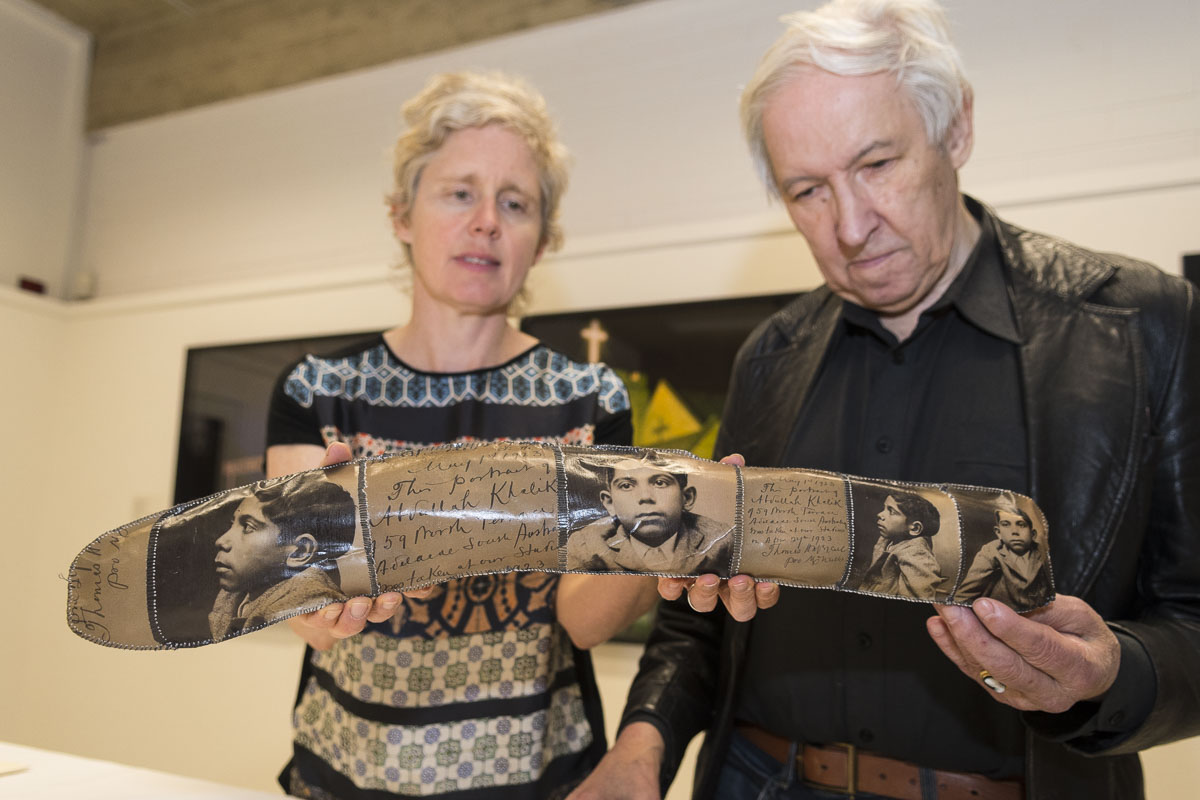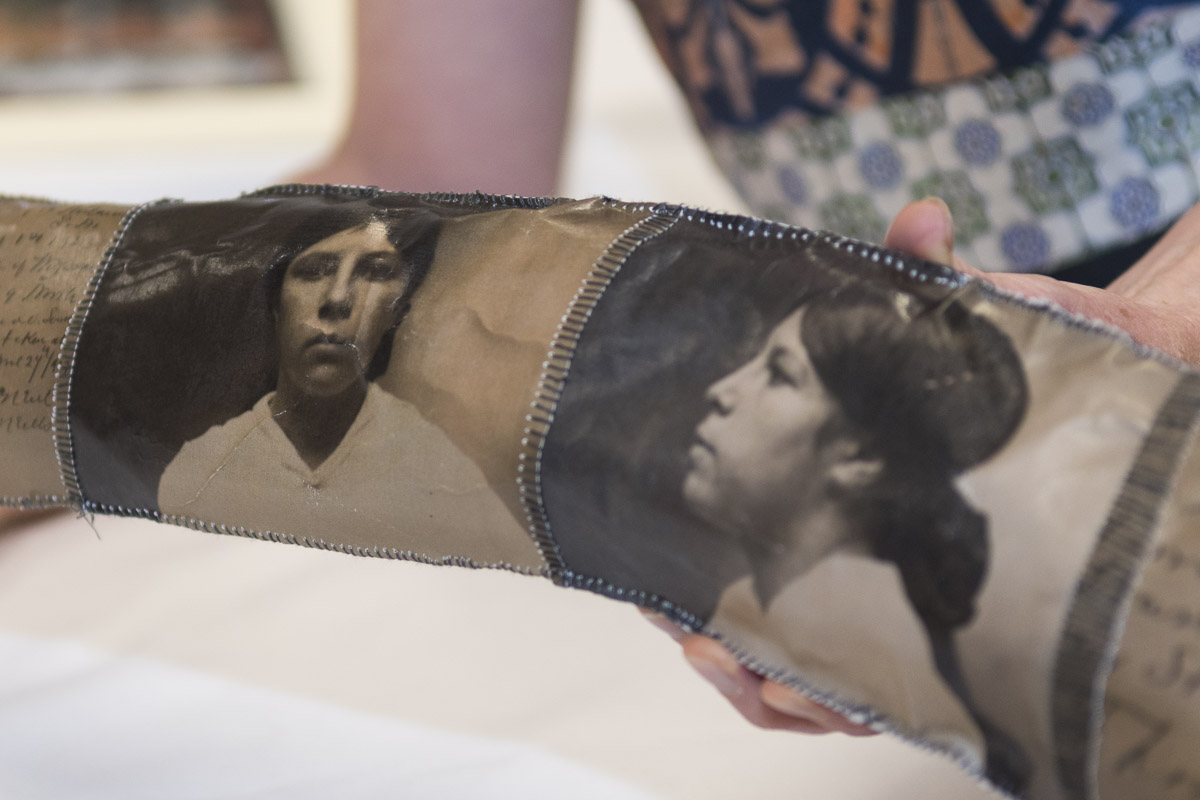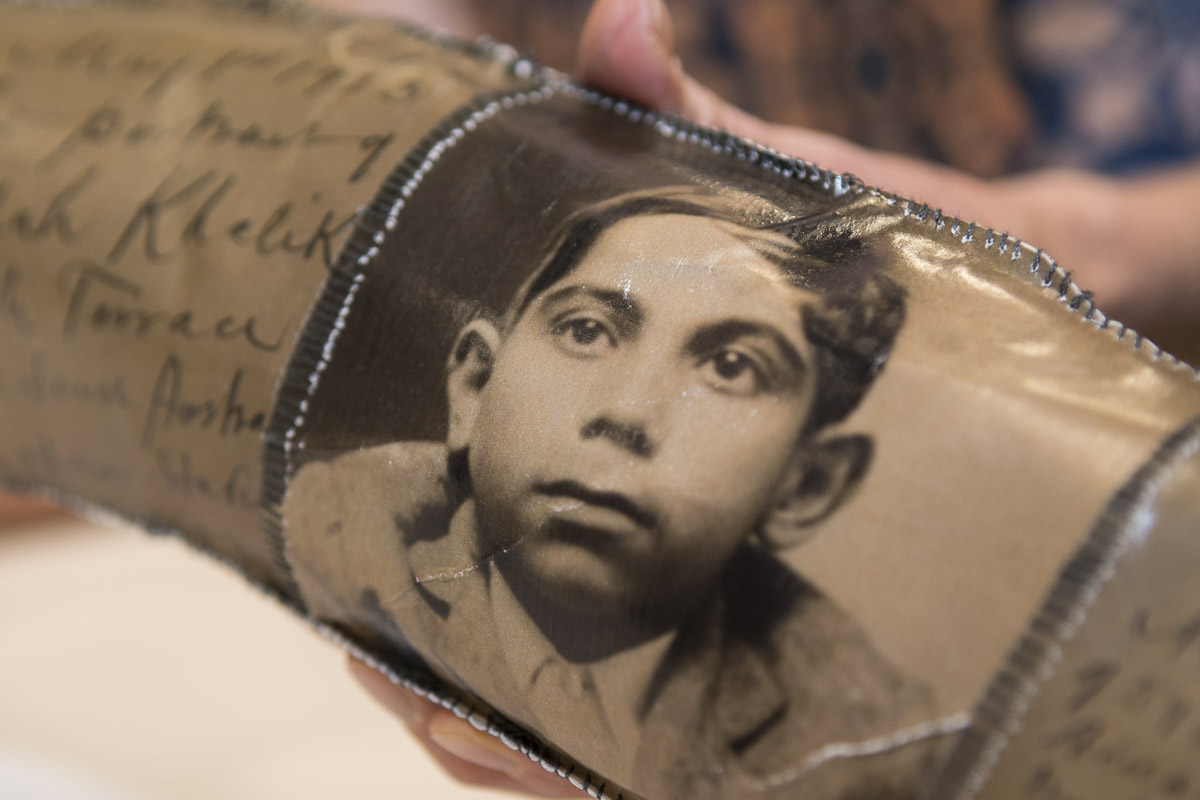
A boomerang donated to Flinders University Art Museum is part of the extraordinary story of the Namatjira copyright battle.
The Namatjira family fought for copyright for eight years and ultimately won in a single day in an historic moment for the Australian art world.
For 60 years the copyright of Albert Namatjira’s significant body of artwork was held by art publisher Legend Press, denying the Namatjira family of more than a half a century of royalties and cultural legacy.
A boomerang designed by South Australian street artist Peter Drew was donated to a charitable auction in effort to raise funds for the Namatjira family and support their ongoing quest to claim their birthright.
Remarkably this quest came to a sudden and public end last month when Australian philanthropist Dick Smith brokered a deal with Legend Press to return Namatjira’s copyright to the Namatjira family for the token sum of one dollar.
Now the boomerang sits in the Flinders University Art Museum, acquired by Flinders own Emeritus Professor of Visual Arts and Archaeology, Vincent Megaw, and gifted to Flinders as a tool for teaching and art appreciation.

Professor Megaw saw the purchase of the boomerang as an opportunity to support the Namatjira cause and help right a significant wrong in the history of Australian art.
He also saw it as an opportunity to contribute to the rigorous visual arts curriculum at Flinders, which involves the interpretation of contemporary Australian art in different historical and social contexts.
“Albert Namatjira brought central Australia to life for thousands who had never seen it for themselves,” says Professor Megaw.
“He was among the first Indigenous artists to paint in a Western style and is the most celebrated proponent of the Hermannsburg watercolour movement.
“I wanted to play a part in restoring ownership of his works to his descendants, while enriching the already significant collection of work by contemporary Australian artists housed at the Flinders University Art Museum.”
The boomerang features photographic images of two children who were born in Broken Hill at the turn of the century to a cameleer father from Karachi (Pakistan) and a presumed Aboriginal mother.
The children were considered to be British Indian and were subject to several White Australia policies at the time, one of which included the Immigration Restriction Act of 1901.
The Act included a notorious dictation test that was used by officials to prevent people of non-European descent from being admitted to Australia.
The children were required to sit the dictation test in order to re-enter the country after trips to Pakistan to purchase more camels.

“It was cruel and absurd that these children should have had to sit such a test, having been born in Australia to an Indigenous mother, but this was a sign of the racist times in which they lived,” says the artist Peter Drew.
“I wanted to capture their sadness, and the sadness of their plight, and so creating an artwork in their image from a boomerang seemed like an appropriate medium.”
Fiona Salmon agrees.
“The boomerang is a wonderful example of the power of art to communicate a time and a place in history,” says Ms Salmon.
“Our students are privileged to be able to critique, handle and learn from genuine artworks such as this special piece created by Peter Drew.
“In many ways the boomerang is emblematic of the loss and return of Namatjira’s legacy to his family and community, and the reaffirmation of his place in Australian art history.
“Flinders University is deeply grateful to Professor Megaw for his donation, and for his lifelong support of our museum, to which he has donated some 250 works,” says Ms Salmon.
Peter Drew’s boomerang joins 8,000 other works held by the Flinders University Art Museum, 2,500 of which are by Aboriginal and Torres Strait Islander artists and nine of which are by Albert Namatjira himself.
See media coverage of the Namatjira copyright battle: Albert Namatjira’s family regains copyright of his artwork after Dick Smith intervenes.
About Albert Namatjira
Albert Namatjira is arguably Australia’s most famous Aboriginal artist. His watercolour landscapes of Arrernte country featuring ghost gums and mountain ranges at dusk have become synonymous with the Australian outback and its rich diversity and extremes.
Namatjira used the ochre colours of his ancestors but adopted a style that appealed to the European aesthetic of art.
He generated over two thousand artworks in his lifetime, the rights to which now belong to his descendants and are managed under the auspices of the Namatjira Legacy Trust.
About Professor Vincent Megaw
Professor Megaw has long been interested in how Indigenous people have adapted their artistic techniques following colonisation, and has helped the Flinders University Art Museum amass an Indigenous art collection of national significance.
He co-facilitated the first national touring exhibition of Namatjira’s artistic legacy almost 30 years ago.
“At the time, the profound impact of Namatjira on his artistic peers and Australian artists generally was not well understood.
“The touring exhibition of 1991-92 was the first large-scale opportunity for Australians to re-engage not only with Namatjira’s work but also with those who followed him,” says Professor Megaw.
The exhibition also led to the publication of the first detailed examination of the Hermannsburg watercolourists, of which Namatjira was the most celebrated, entitled The Heritage of Namatjira.
The book was edited by Jane Hardy, Ruth Megaw and Vincent Megaw in 1992.

